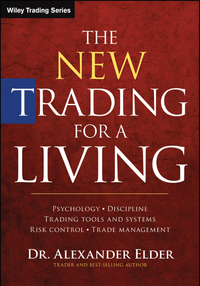Question
1. Was the decision to start paying a cash dividend of $0.02 per share per quarter a good decision? Why or why not? 2. Was
1. Was the decision to start paying a cash dividend of $0.02 per share per quarter a good decision? Why or why not?
2. Was the $3 per share special dividend desirable? Why or why not?
3. What were Bill Gates proceeds as part of the $3 per share special dividend? What did he do with those proceeds? Did the size of his proceeds cause investor backlash? Should companies consider this when choosing to pay dividends or special dividends? Why or why not?
4. What, if anything, should Microsoft have done with its $64 billion of cash and short-term investments?
5. Analyze and describe Microsofts dividend policy as it exists today.
Do you agree with the firms dividend policy? Why or why not? What, if anything, should Microsoft do differently with its extra cash and why?
Strategic OverviewMicrosoft announced at the annual shareholders meeting in November 2002 that, despite having $40 billion in cash on its balance sheet, the company would not be taking any substantive measures to distribute the cash to its roughly 4.2 billion shareholders. Microsoft statedthat the cash was needed to satisfy judgments that could arise from ongoing corporate and private antitrust lawsuits.While the company had a history of buyingback its stock, Microsoft had never paid a dividend since going public in 1986.The no dividend policy made sense historically as high-tech, growth companies with high P/Es, typically dont issue dividends, but instead elect to plow their profits back into the business. But as of the shareholder meeting, Microsofts growth had slowed to about 10 percent annually, from 30 percent or more in the companys early years, and the stock, as evidenced by its inclusion in the Dow Jones Industrial Average, had begun to look more like a stable blue chip thana high-flying tech issue.The announcement made at the 2002 meeting angered many shareholders. Growth had stagnated and the company was sitting on a pot of cash. It was an efficient business that was generating $1 billion a month in free cash. In a shrinking interest rate environment, Microsofts returns on short term investments were insignificant and reduced the firms return on equity. The state of affairs led one investor at the meeting to comment, We need a reason to hold the stock. We need a dividend. We need something.OptionsManagement was under pressure to act. They could choose between a myriad of options including: 1) Doing nothing, 2) Using the cash to finance acquisitions and expansion, 3) Returning the cash to shareholders by beefing-up the ongoing stockrepurchase program, a program that had the company buying back shares at the rate of up to $ 6 billion a quarter, or 4) Returning cash to shareholders by issuing dividends. Given the company had virtuallyno debt (see below), share repurchase appeared to be an efficient way to solve the problem. Buybacks are tax efficient to individualinvestors and protect shares from dilution due to option exercise. Unlike repurchases, investors assume that dividends payments, once begun, will continue indefinitely.DecisionIn mid-January of 2003, three months after the November 2002 shareholder meeting, the company surprised the investment community by announcing its first-ever annual cash dividend of 8 cents per share (2 cents per quarter). The dividend represented
Bierman, H. (2017). Case studies for corporate finance: from A (Anheuser) to Z (Zyps) (Vol. 1). World Scientific.a total outlay of more than $850 million which translated into just over a quarter of 1 percent of the share price. While the dividend made big news, it was met with criticism that the dollar amount was insignificant.Following the announcement speculation immediately arose over Microsofts change in philosophy. One suggested reason for the dividend was President Bush proposed tax reform plan which would exempt shareholders from income tax on dividends (later changed to a 0.15 tax rate). Another possible reason, and the one that Microsoft stated publicly, is that many of the companys legal risks are largely behind them. The company settled with the Justice Department and many private antitrust claimants and has made progress with the European Union.Shareholder Reaction and Company UpdateMicrosofts stock price dropped about $4 or 7% the day following the dividend announcement. This was partially attributable to the relatively weak outlook for the current quarters, but the falling price was likely an indication that some investors concluded that Microsoft had exhausted its growth options and the future looked uncertain.Despite the dividend payments and despite continuedstock buyback, Microsoft continued to increase its cash balance. In July of 2004, the company announced it would issuea special cash dividend of $3 per share payable on December 2, 2004. With almost 11 billion shares outstanding, the special dividend would return almost $33 billion in cash to shareholders. In July,the company also announced that it would begin to pay a regular quarterly dividend of $0.08 per quarter. The move represented a doubling of the dividend the second time the dividend had doubled since the initial dividend issuance. But even with the latest doubling, Microsofts yield will still be below the 1.7% average yield for the S&P 500
Step by Step Solution
There are 3 Steps involved in it
Step: 1

Get Instant Access to Expert-Tailored Solutions
See step-by-step solutions with expert insights and AI powered tools for academic success
Step: 2

Step: 3

Ace Your Homework with AI
Get the answers you need in no time with our AI-driven, step-by-step assistance
Get Started


